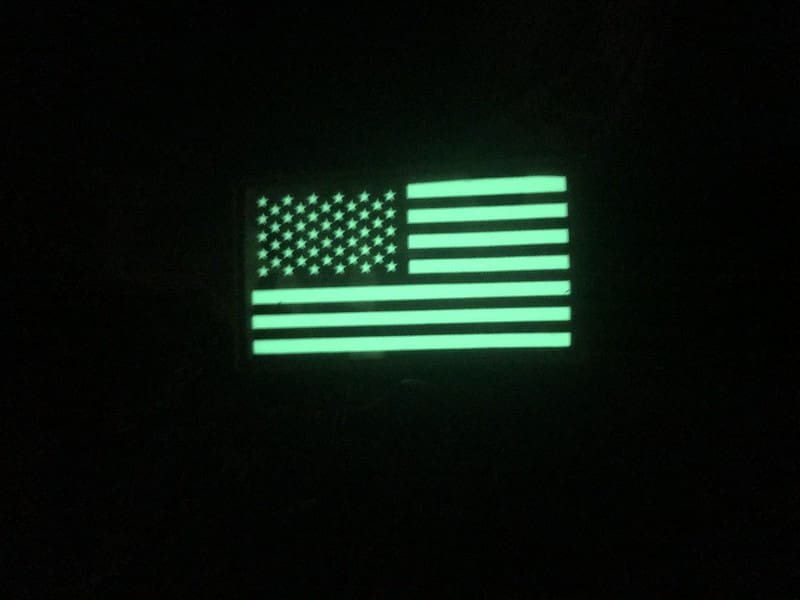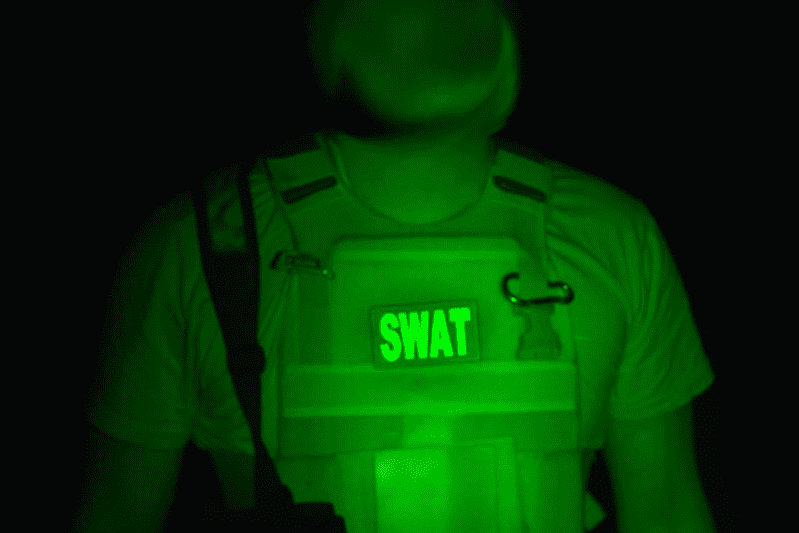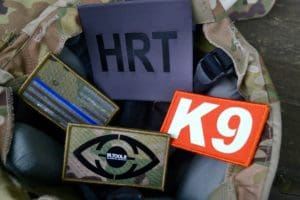Darkness Increases the Dangers for Soldiers and Police
Working in the dark is no easy task. Even more so, working in the dark for our military and law  enforcement is very dangerous.
enforcement is very dangerous.
Risk not only looms from enemies and criminals but also from each other.
We hear from Military and Law Enforcement men and women every day who come to us asking how our films can help them ID those they are working with. When the call comes for them to respond, the last thing we want on their minds is doubts about how their equipment will keep them safe from each other.
IR.Tools has solutions to protect moms, dads, sisters, and brothers so they don’t have to be a “friendly” accident and can safely return home at the end of the shift or deployment.
We use 3 film technologies:
- IR reflective film
- Thermal film
- Photo-luminescent film
Each of these films functions in a unique way to protect the user and prevent injuries and possible deaths.
IR Reflective film has been reliable for IFF protection since WWII
IR (infrared) reflective film is probably the most popular and well-known identification film used for IFF protection in military and law enforcement operations today. Since its inception in WWII, IR reflective film effectively marks soldiers and officers primarily in the form of patches worn on the helmet, chest, and shoulders.
There are 2 versions of this reflective film: FIeld (covert) and Garrinon (non-covert). While both can be seen with a night vision device this film will be used in two entirely different capacities.
Covert IR Field Film
The IR Field ( in the battlefield) film is seen only when illuminated with a Night Vision device (NOD, NVG). This reflective film begins as the garrison film yet is coated to prevent white light from reflecting off the patch. When white light hits the patch, it is absorbed by the coating and the user remains undetected.
Soldiers and police can stealthfully move about and remain protected from friendly fire.

Non – Covert IR Garrison Film
The IR Garrison (at the fort) film reflects white light – flashlight, headlight, moonlight, etc… Most of us are familiar with white light reflective materials on road signs, roads, bicycles, and even extreme sports have reflective material in clothing. Our IR garrison film works in much the same way during a non-covert assignment.
When white light hits the patch, the light reflects the identity and location of the user preventing any injury or casualty. We always recommend the Garrison film when being hit by a car is more likely than being hit by a bullet.
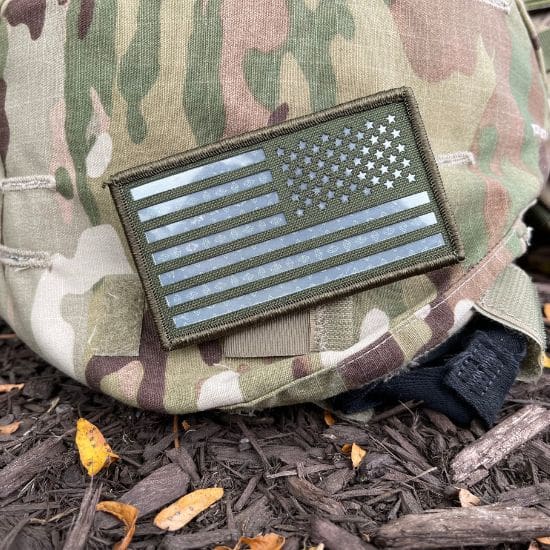
Thermal film has advantages in the day or night
The reliability of thermal film in the day or night and all weather conditions is slowly gaining momentum as the “go to” choice for IFF protection and Search and Rescue operations. Thermal films are versatile and can be used as patches for personal identification, panels for personal and vehicle ID, markers for vehicle ID as well as training targets.
Unlike IR film, thermal films need no illuminator to be seen, and when identified with a thermal device (FLIR) the film will appear dark or cold. Another advantage to thermal films is that the patch, panel, or marker on the user/vehicle can be seen through smoke, rain, or fog making it an excellent deterrent against IFF casualties.
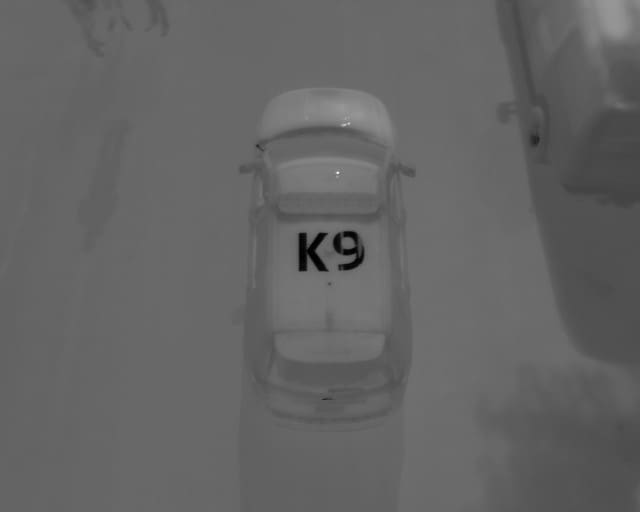
Photo-luminescent Films are Seen with the Naked Eye
Consider photo-luminescent film for these situations:
- non-covert (ex. Search and Rescue)
- there is no advanced equipment available (NVG, FLIR, flashlight)
- requires naked eye identification
Photo-luminescent film “glows in the dark.” Soldiers and police ID one another with the naked eye in these non-covert situations. No advanced equipment is necessary.
This film is often designed as a patch and is attached to a helmet, shoulder, or chest. A fully charged patch glows for up to 8 hours.
The materials in the film absorb light in the visible and ultraviolet wavelengths and release the light in a blue-green glow.
Gradually over time, the glow will decline. In this case, a Night Vision device with no illuminator active works.
The film can be charged by the sun or an electric white light source.
